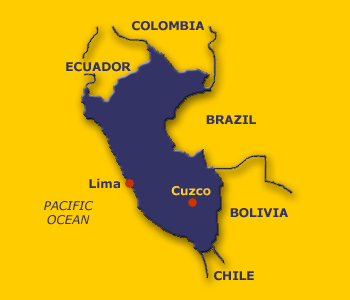Peruvian Spanish has distinctive characteristics with the respect to the Spanish used in the rest of the continent. Let us examine these differences, then. Peruvian Spanish is the product of a mixture of Andean civilization, the Spanish cultural process, and African contributions.
The most widely spoken language in Peru is Spanish (83.9% of the population). Next are the indigenous languages with Quechua the leader with 13.2%, followed by Aymara, with 1.8%.
From a legislative
Quechua should be considered as a “macro-language”, as there are more than 25 varieties of Quechua in Peru. As well as Quechua, there are many other indigenous languages, such as Arawak and Pano.
This linguistic diversity is understood through the history of this country, which was conquered by the Spanish. At first, Spanish was only spoken by the Spanish and the mestizos in the cities, while in the country people continued to speak Quechua and other indigenous languages for four centuries, until the first half of the twentieth century. It was then that Peruvian government imposed Spanish language and this coincided with the explosion and “inclusion in the home” of the mass media.
Peruvian Spanish has four dialects: ecuatorial (Equatorial), ribereño (Riverside), andino (Andean) and amazónico (Amazonian).
It is used in the mountainous areas (rural) and has similarities with Ecuadorian and Bolivian Spanish. Its speakers have been discriminated against by Spanish speakers from the coast and, especially, by people from Lima.
Other characteristics are
Confusion of gender and number: “A ellos la recibí bien”, “La vida es caro”, “Esa es su camiseta del carlos”.
Abuse of the diminutives –ito and –ita: “Vente aquicito”, “Sí, señorita”.
Lo-ism: “Lo echan la agua”, “Las pintan la casa”.
Duplication of possessives and objects: “Su casa de Juan”. “La conozco a él”. The absence or redundant use of articles: “Plaza de Armas es acá”. “La Daniela está loca”.
Strange use of the preposition “en” with locative adverbs: “Todo caerá en su encima”
Use of “no más” and “pues” after verbs: “Dile nomás, pues”.
Use of a verb at the end of a phrase: “Está enojada, dice”.
Use of the compound past instead of the simple past and use of the indicative mode instead of the subjunctive in the subordinate clause.
Riverside or “Limeño” Peruvian Spanish
It is spoken by the educated class from Lima or who have spent long periods of time in the capital or on the coast. It is reputed to be the best Spanish in America and, although it is spoken by a minority, it is the basis of normative Spanish.
Characteristics:
Vowels are pronounced clearly and are of equal duration.
“rr” and “r” are pronounced without producing a fricative sound.
The “s” is predorsal and is aspirarated before a consonant (not at the end of a syllable).
The final “d” becomes a “t” or is omitted.
There is “yeísmo” (pronunciation of “ll” as “y”).
There is a tendency to eliminate the gap in words with the suffix –ear.
Andean-Riverside or “Neolimeño” Peruvian Spanish
It was born in the last thirty to fifty years from the fusion of the speech of Andean people who migrated to the city with the speech of city dwellers. Today it is the dialect that identifies Peruvians.
Characteristics:
Fast speech of varied intonation with Andean base:
Discordance of gender and number, constant use of diminutives and augmentatives, loísmo (excessive use of “lo”), double possessive and the conjunction “pues”, “pe’” or “pue’” at the end of phrases; and
Use of neologisms and Quechua.
Amazonian Peruvian Spanish
It was developed especially through the contact between Andean Peruvian Spanish and Limeño with Amazonian languages, without too much influence from the latter. It has a distinctive tonal structure.
Characteristics:
The “s” syllable resists aspiration.
Confusion of “j” (aspirated in the internal situation) with “f” (always bilabial): “San Fan”, San Juan
There is occlusion of the intermediate “b”, “d” and “g” in rising tones with aspiration and lengthening of vowel sounds.
The phonemes “p”, “t” and “k” are aspirated.
The “y” tends to the African (as opposed to the coast).
Assibilation, not very strong, vibrant.
The best-known change in the syntactic order is the preemption of the genitive.
“De Antonio sus amigas”
Equatorial Peruvian Spanish
In Peru it is spoken in Tumbes province, and its center is in the Pacific coast of Ecuador and Colombia.
It is a transition between the Riverside and Caribbean dialects, and has a notable influence from the Canarian and Andalucian dialects, a strong African influence and Taíno words. This is the dialect we hear from salsa, merengue and reggaetón singers.
Characteristics
Emphasis on vowels at the expense of consonants.
Elision of the “s” at the end of a word or before a consonant.
Elision of the “r” before any word that begins with a vowel and at the end of a word.






